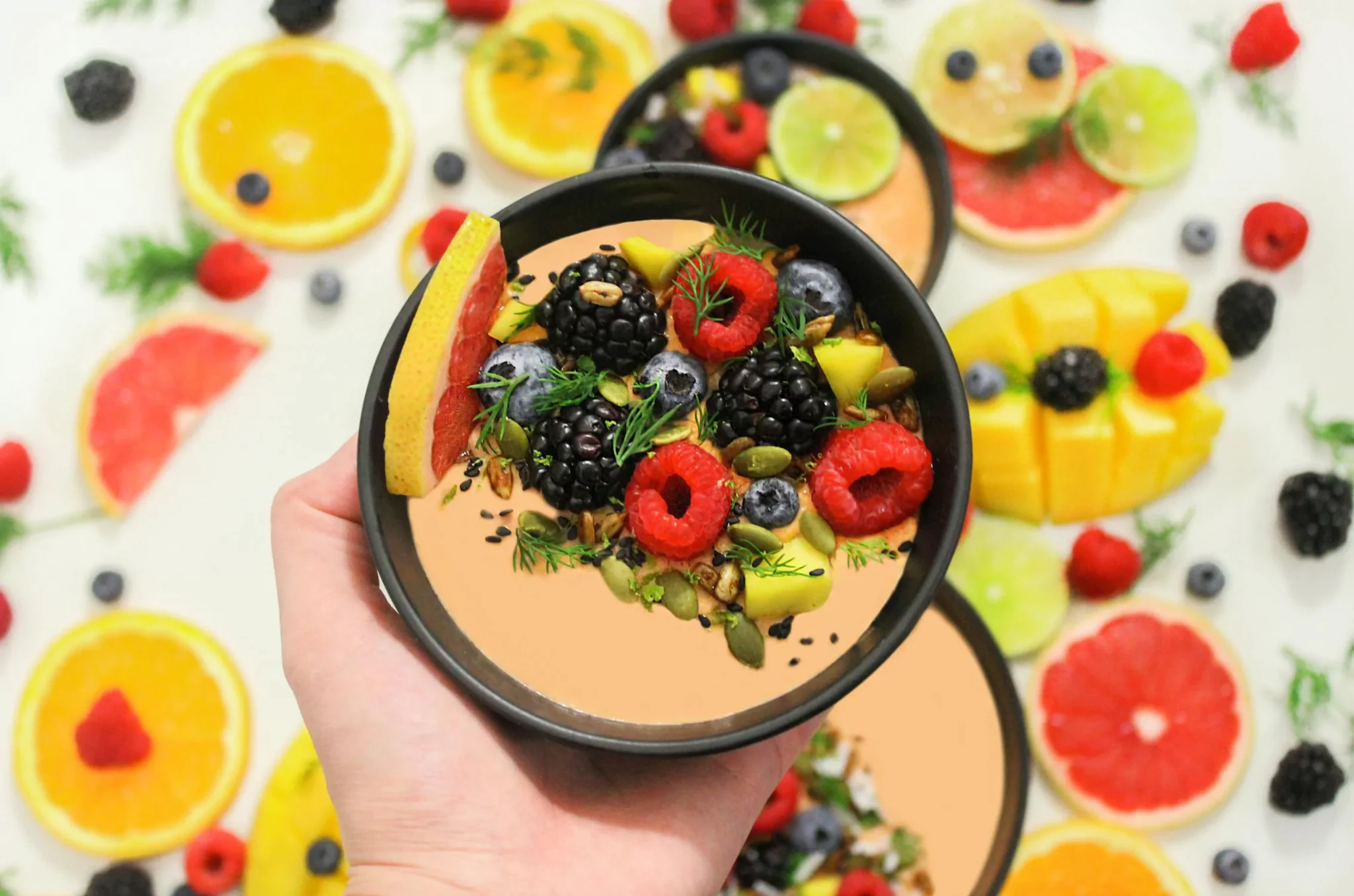Anti-Inflammatory Diet: Simple Daily Foods That Quietly Heal Your Body Over Time
Inflammation is your body’s natural defense mechanism. It helps you heal from injuries and fight off infections. But when inflammation becomes chronic, it can silently damage your body and pave the way for conditions like heart disease, diabetes, arthritis, and even cancer. That’s where the anti-inflammatory diet steps in—not as a quick fix, but as a gentle, lasting solution rooted in daily choices.
See Story : https://openwrites.com/web-stories/10-powerful-foods-that-heal-inflammation-and-boost-your-health/
This guide breaks down the concept of inflammation, how food influences it, and the simple daily foods that have been shown to help quietly heal your body over time.
What Is Inflammation—And Why Should You Care?
Inflammation is your immune system’s response to irritants, injury, or infection. In the short term, it’s good. Think of it like a rescue crew rushing to a car crash. But what if that crew never leaves? That’s chronic inflammation—the kind linked to:
-
Heart disease
-
Type 2 diabetes
-
Alzheimer’s
-
Autoimmune diseases
-
Obesity
-
Cancer
Unlike acute inflammation (like a swollen ankle), chronic inflammation can simmer silently for years without symptoms. And diet plays a major role in either fueling or calming it.
The Science Behind the Anti-Inflammatory Diet
The anti-inflammatory diet isn’t a fad—it’s a long-term, sustainable way of eating focused on whole, nutrient-rich foods. It’s based on scientific evidence linking certain foods to lower levels of inflammatory markers in the body, such as C-reactive protein (CRP).
Read Also : https://openwrites.com/health/top-10-keto-diet-foods-to-burn-fat-faster-in-2025/
This style of eating draws from the Mediterranean diet, traditional Asian diets, and whole-food plant-based approaches. What they all have in common is:
-
Lots of plants
-
Minimal processed foods
-
Healthy fats
-
Low sugar
-
Balanced protein
The Daily Healing Foods You Need
Here are the everyday heroes of the anti-inflammatory diet—simple foods you can include in your daily meals to gradually reduce inflammation and improve long-term health.
1. Berries
Berries like blueberries, strawberries, and raspberries are packed with antioxidants and polyphenols, including anthocyanins, which are known to fight oxidative stress and lower inflammation.
How to eat them daily:
-
Toss into oatmeal or yogurt
-
Add to smoothies
-
Snack on them fresh
2. Leafy Greens
Kale, spinach, Swiss chard, and arugula contain vitamins A, C, and K, magnesium, and flavonoids—all of which help neutralize free radicals that trigger inflammation.
Daily habit:
-
Add to your salad, sandwich, or sauté
-
Blend into green smoothies
-
Stir into soups or stews
3. Fatty Fish
Salmon, sardines, tuna, and mackerel are rich in omega-3 fatty acids (EPA and DHA), which have powerful anti-inflammatory effects.
How often:
Aim for 2–3 servings per week.
Try this:
-
Grill or bake with lemon and herbs
-
Make salmon salad for lunch
-
Add to a grain bowl
4. Olive Oil
Extra virgin olive oil contains oleocanthal, a compound with effects similar to ibuprofen. It’s a staple in Mediterranean diets.
Use daily:
-
Drizzle over salads
-
Use in cooking or marinades
-
Dip whole grain bread
5. Nuts and Seeds
Almonds, walnuts, chia seeds, and flaxseeds offer healthy fats, protein, and antioxidants. They also contain alpha-linolenic acid (ALA)—a plant-based omega-3.
Snack smart:
-
Add to oatmeal or yogurt
-
Blend into smoothies
-
Sprinkle on salads
6. Turmeric
The compound curcumin in turmeric has been shown to reduce inflammation at the molecular level, especially when paired with black pepper for better absorption.
Use daily:
-
Add to tea (turmeric latte)
-
Sprinkle in soups or rice
-
Take in supplement form if advised
7. Tomatoes
Tomatoes contain lycopene, a powerful antioxidant that fights inflammation, especially when cooked (think tomato sauce or roasted tomatoes).
Daily tip:
-
Use tomato sauce in pasta dishes
-
Make fresh salsa or gazpacho
-
Add to omelets or grain bowls
8. Whole Grains
Brown rice, quinoa, oats, barley, and farro are loaded with fiber, which supports gut health and reduces CRP levels in the blood.
Easy ways to include:
-
Overnight oats for breakfast
-
Quinoa salad for lunch
-
Brown rice bowl for dinner
9. Green Tea
Green tea is rich in epigallocatechin gallate (EGCG), a polyphenol that helps reduce inflammation and may protect against cellular damage.
Sip regularly:
-
Replace one coffee with green tea
-
Brew a pitcher to chill
-
Try matcha for a boost
10. Beans and Legumes
Lentils, chickpeas, black beans, and kidney beans are affordable, fiber-rich, and packed with anti-inflammatory compounds.
Simple meals:
-
Lentil soups
-
Bean-based salads
-
Hummus as a spread or dip
Foods That Fuel Inflammation (Avoid These)

An anti-inflammatory diet works best when you reduce inflammatory triggers. Limit:
-
Refined carbs (white bread, pastries)
-
Sugar-sweetened beverages
-
Processed meats (bacon, hot dogs)
-
Fried foods
-
Excess alcohol
-
Trans fats and hydrogenated oils
Real-Life Benefits: What People Are Saying
Laura, 52: After adopting an anti-inflammatory diet for her arthritis, she noticed reduced joint pain within 3 weeks and improved energy levels.
Jason, 40: A prediabetic father of two, he swapped sugary snacks for nuts and berries, replaced white rice with quinoa, and began walking daily. His CRP levels dropped significantly in 3 months.
Maya, 29: Struggled with skin flare-ups and bloating. By removing processed foods and introducing turmeric, green tea, and greens, her symptoms eased naturally.
How to Build a Simple Anti-Inflammatory Meal Plan
Here’s how to structure your day with healing foods:
Breakfast
-
Oatmeal topped with blueberries, chia seeds, and almond butter
-
Green tea
Lunch
-
Quinoa salad with leafy greens, chickpeas, tomatoes, olive oil, and lemon
-
Handful of walnuts
Snack
-
Greek yogurt with raspberries and flaxseed
Dinner
-
Grilled salmon with brown rice and steamed spinach
-
Roasted tomato and garlic soup
Optional
-
Turmeric golden milk before bed
Anti-Inflammatory Diet for Different Lifestyles
Busy Professionals: Prep overnight oats, snack on nuts, keep olive oil-based salad dressings ready.
Families: Make anti-inflammatory meals in bulk—soups, stews, and whole grain pasta with veggie sauce.
Athletes: Focus on protein-rich legumes, omega-3s, and plenty of antioxidants for muscle recovery.
Seniors: Soft foods like stewed tomatoes, soups, and smoothies can be easier to digest while packing nutrition.
Common Myths About the Anti-Inflammatory Diet
1. It’s expensive.
Truth: Beans, oats, frozen berries, and brown rice are among the cheapest and healthiest foods available.
2. You need to go vegan.
Not true. While plants are central, fish, eggs, and lean meats can be part of a balanced anti-inflammatory diet.
3. It’s just another trend.
Unlike fad diets, this approach is backed by decades of research from reputable institutions worldwide.
Long-Term Healing Happens Quietly
The power of the anti-inflammatory diet doesn’t lie in quick results. It’s not about weight loss in 10 days or a “miracle cure.” Instead, it’s about gentle, daily actions that stack up over time—foods that heal you quietly, without drama.
Whether you’re looking to prevent disease, ease chronic pain, or simply feel better, these everyday foods are your frontline defenders.
Final Thoughts: Start Small, Stay Consistent
You don’t need a perfect diet. You need a sustainable one. Start with one change—maybe add a handful of berries to breakfast or switch to olive oil. Then build from there. Over time, the benefits of the anti-inflammatory diet will become part of your body’s story—written quietly, but powerfully.
Frequently Asked Questions (FAQs)
1. What is the anti-inflammatory diet in simple terms?
It’s a way of eating that focuses on whole, natural foods that reduce chronic inflammation in the body. It emphasizes fruits, vegetables, healthy fats, whole grains, and lean proteins while avoiding processed and sugary foods.
2. How quickly can I see results from an anti-inflammatory diet?
Some people notice improvements in energy, digestion, and joint pain within 1–3 weeks. Long-term health benefits build gradually over months of consistent eating.
3. Is the anti-inflammatory diet good for weight loss?
Yes, many people naturally lose weight on this diet because it reduces cravings and stabilizes blood sugar, but its primary goal is reducing inflammation and improving overall health.
4. Are eggs inflammatory?
Eggs are considered neutral or slightly anti-inflammatory for most people. However, some individuals with sensitivities or autoimmune conditions may need to limit them.
5. Can I eat meat on an anti-inflammatory diet?
Yes, lean meats like chicken, turkey, and fish—especially fatty fish like salmon—are encouraged. Limit red and processed meats as they may increase inflammation.
6. What drinks help reduce inflammation?
Green tea, turmeric tea, and plain water are excellent anti-inflammatory options. Avoid sugary drinks, excessive caffeine, and alcohol.
7. Is coffee allowed on the anti-inflammatory diet?
In moderation, yes. Black coffee contains antioxidants and is generally fine for most people. Overconsumption or sugary coffee drinks should be avoided.
8. Are all fruits anti-inflammatory?
Most fruits are beneficial, especially berries, oranges, apples, and grapes. Avoid excessive fruit juice or dried fruits with added sugar.
9. How does sugar affect inflammation?
Added sugar is one of the biggest drivers of chronic inflammation. It spikes insulin and increases inflammatory markers, so it’s best to minimize it.
10. Can kids follow an anti-inflammatory diet?
Absolutely. It’s a healthy and balanced way of eating for all ages. Just ensure their meals include enough variety, healthy fats, and nutrients for growth.
